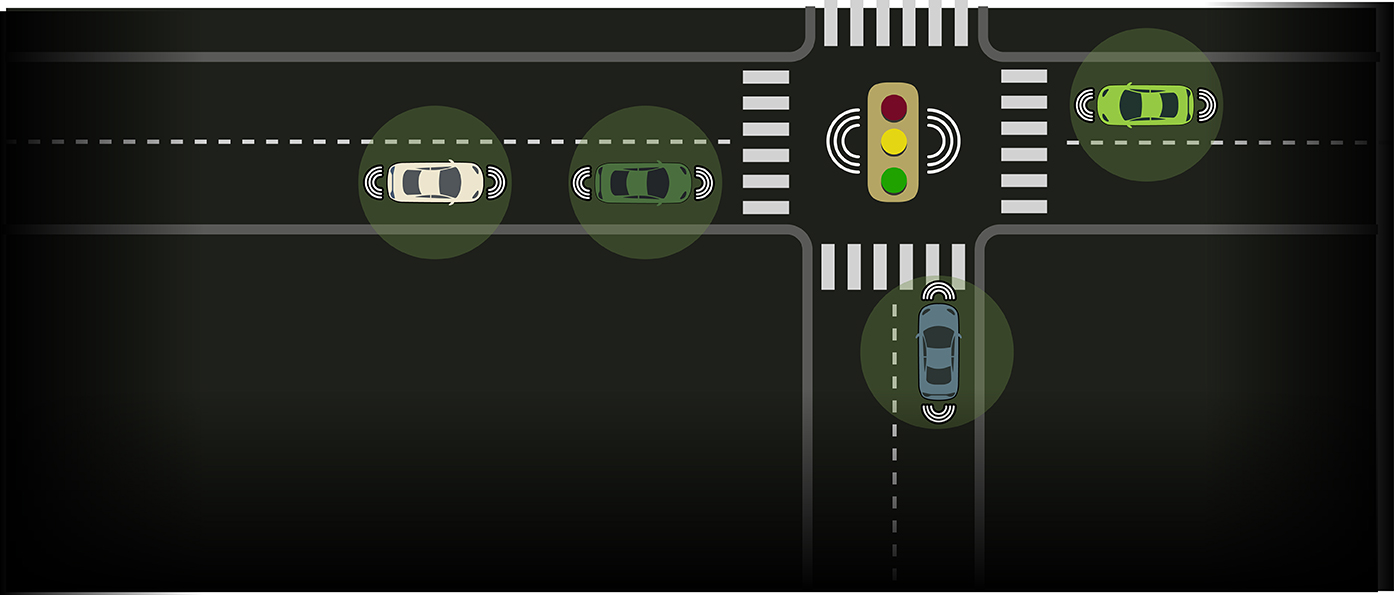
New technology advancements and capabilities are appearing almost every day, and engineers are using these to find smarter solutions for their clients and the communities around them. One such improvement becoming increasingly common is adaptive traffic signals. Adaptive Signal Control Technology (ASCT) systems collect and analyze traffic patterns and adjust signal timings in real time to reduce traffic delays and emissions while maintaining safe bicycle and pedestrian access. With adaptive signals in place in more cities, a safer relationship between pedestrians and vehicles can exist. With autonomous vehicles on the horizon, development of adaptive signals will come into play in more ways than reducing traffic congestion alone.
Cities around the world are experimenting with ASCT. Right now, in Portland, Maine, city officials have installed a traffic adaptive signal project which they expect to cut wait times along the busy commuter roads that feed through the high-volume intersection by 20 to 30 percent. Read more about their smart solutions upgrade here.
Here at Pennoni, we have also seen an acceptance of adaptive signals and we are currently working on implementing this technology at more than 100 signals in Pennsylvania. One project is the implementation of adaptive technology in a system of three signalized intersections along a portion of the US 15 corridor in Lewisburg, Union County, PA for the Pennsylvania Department of Transportation (PennDOT). The US 15 Smart Transportation Corridor Improvement Study completed in 2012 recommended implementation of an adaptive traffic signal control system along the US 15 corridor as a short-term, low-cost, capacity-adding alternative.
The project’s main priorities were to address safety at intersections, reduce/manage vehicular traffic congestion, and provide safe bicycle and pedestrian access. The adaptive signals replaced a signalized system of three intersections that was not operating consistently as an effective coordinated system.
Services provided by Pennoni for implementation of the US 15 Lewisburg ASCT system included but were not limited to:
- Installation of above-pavement nonintrusive thermal video detector cameras.
- Installation of new signal cabinets to provide sufficient space to accommodate the new signal equipment.
- Installation of Adaptive processors, pedestrian modules, field termination panels, and other related devices required for adaptive operation,
- Construction of new underground conduit lines where needed to provide enough space for installation of the required wiring associated with the ASCT system and miscellaneous signal upgrades.
- Construction of new junction boxes as required to pull the new cables through.
- A Broadband Wireless Radio Ethernet-based communications system was installed to support adaptive operations.
- An Internet modem installed at a master intersection location so that high-speed Internet service is delivered for a fully functional corridor-wide communications network. The new signal hardware required by the ASCT system will be implemented attached to or next to the existing signal infrastructure
A ‘Before & After’ ASCT evaluation report is being prepared by Pennoni to determine the extent of the improvements at these intersections. Stay tuned for more ASCT work by Pennoni, and for any questions regarding this technology, please contact: Miguel de la Riva, PE, PTOE.